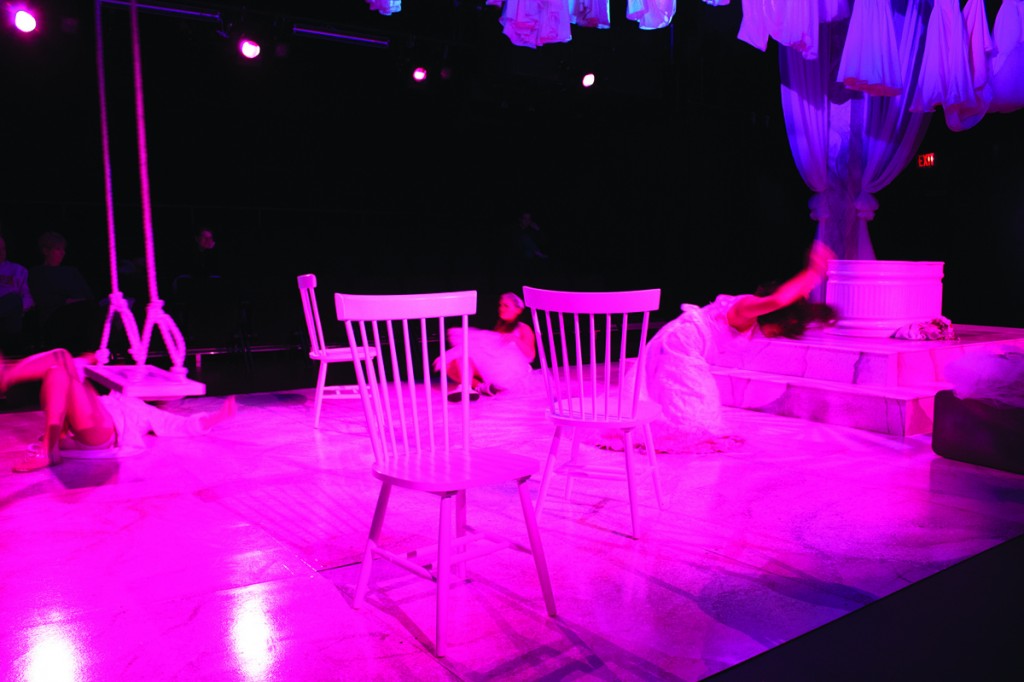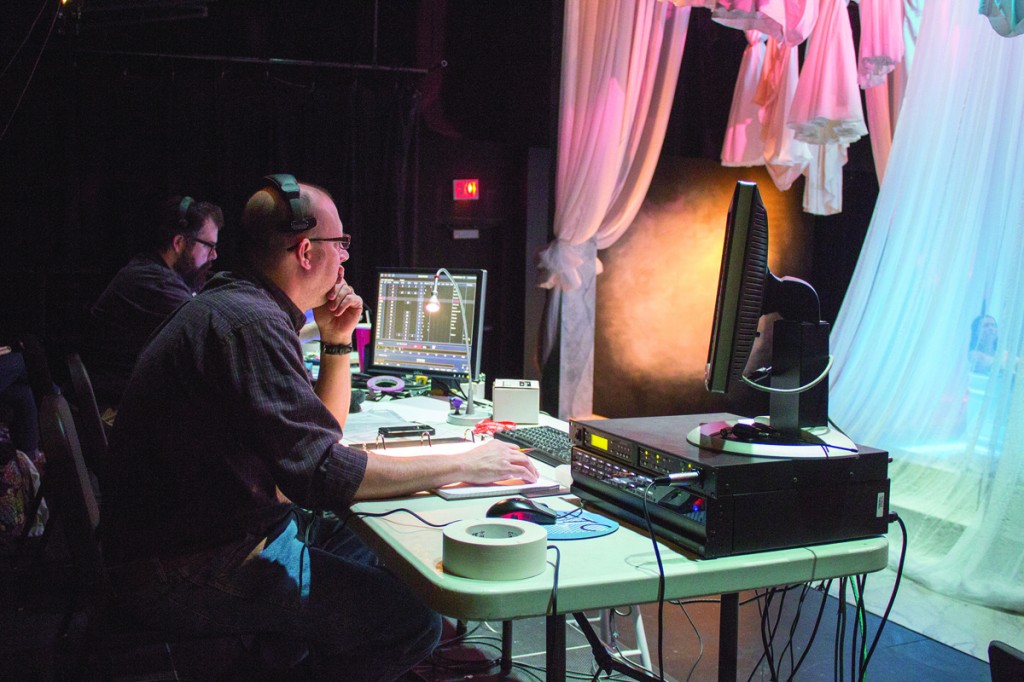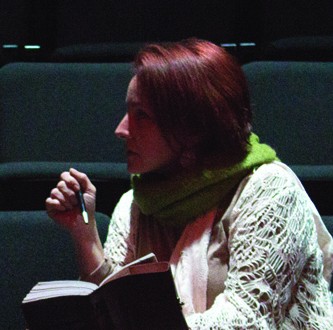a transformation of light
 The wedding dresses proved a challenge to Penna as a lighting designer. “I had to figure out a way to get light underneath all of these dresses to light the stage and yet make the lighting look the way it needs to, and have these moments of realism versus theatricalism.” At the beginning of the performance, the pink and blue lights shimmer across the dresses’ white fabric and suggest the play’s central theme: gender. Image by Neil Caudle.
The wedding dresses proved a challenge to Penna as a lighting designer. “I had to figure out a way to get light underneath all of these dresses to light the stage and yet make the lighting look the way it needs to, and have these moments of realism versus theatricalism.” At the beginning of the performance, the pink and blue lights shimmer across the dresses’ white fabric and suggest the play’s central theme: gender. Image by Neil Caudle.Tony Penna bides in a liminal space, between light and darkness. He’s Lauren French’s lighting designer, and, as the director of the theater program, also serves as the de facto producer. So, all at once, he embodies the paradox any theater production: collaboration with hierarchy.
Penna offers to take us up to the catwalk and the grid. He’s headed up there anyway to make some notes, to focus some lights before this rehearsal. He leads us through a back access door, past paint cans and tool racks, to a metal spiral staircase.
The catwalk rings the theater in a second story. He brings us around to the light booth, a small loft area that inconspicuously hangs over the audience seating below. Right now, Liz Haynes and Wylder Cooper, two undergraduates on the stage crew, sit there. The tilted panel before them is covered in groups of sliders, which are controlled electronically by the computer at Haynes’ shoulder. To Penna, after all these years, that monitor’s an easy read.
“It’s like being in the matrix,” Penna explains. “I look at that monitor and see the stage.”
Haynes, the student stage manager, calls out, “Standby light cue one hundred!”
“Lights,” Cooper replies. A sophomore interested in going into theater, he’s Penna’s go-to guy for tech. He rigged up the wireless up-lighting beneath the stage’s central podium.
“Light cue one hundred go,” Haynes says.
The set below us transforms, saturated with reds and blues.
Penna intends to light the realistic scenes starting with lights that mimic midday but over the play’s course dim down to sunset. The impressionistic scenes, which reflect the characters’ internal realities rather than any physical ones, will follow other rules.
“It’s not a traditional narrative play,” Penna explains. “It has moments of realism and moments of expressionism where you experience the play through the eyes and ears of the characters. You see and hear what they see and hear.”
So when it comes to the women’s tantrum scene, Penna spoke with French about lighting the stage with deeply saturated colors, to represent the world as the women see it. But he wasn’t as certain about the lighting of the men’s tantrum scene.
“I started thinking about opposites, men versus women, and opposites in lighting, and what is the opposite of light?” Penna asks. “I don’t want to do darkness because that would be visually very boring. So we came up with the idea of during the men’s tantrum of lighting the stage with black lights.”
When we climb up and reach the grid, it bounces underfoot, a network of cables and pipes. Around our heads are air ducts, a corrugated ceiling, and soundproofing painted black. Penna shouts and the stage crew downstairs hurries to put on hard hats. He explains that the Occupation Safety and Health Administration (OSHA) categorizes theater as construction, so when anyone’s up here everyone below has to gear up.
Penna clips a wrench to his belt—it’s been jerry-rigged to a telephone cord per OSHA regulations—and turns on each light. He tightens bolts.
“This particular set,” Penna explains, “there are few set pieces that come on stage to change the stage picture, but for the most part it’s a static set that you see on the stage through the whole show. It’s the lighting—this is why I’m so drawn to lighting—the lighting is what transforms the space from the real world into the inner world of the characters.”
And that’s the whole point, isn’t it?
Tony Penna is an associate professor of theatre in the Department of Performing Arts, College of Architecture, Art, and Humanities.
From the first scan of script to the jitters of opening night, a play sweeps the faithful away on a journey of fearsome discovery.







